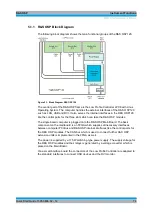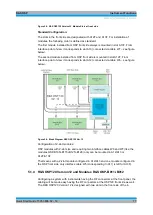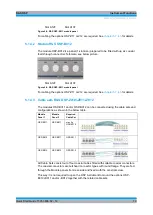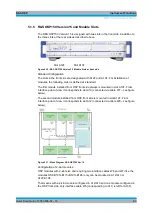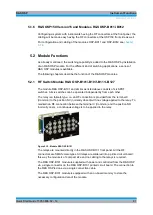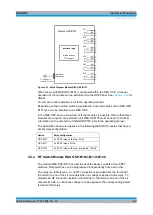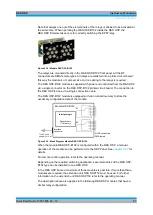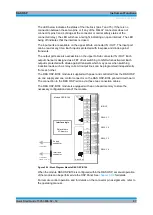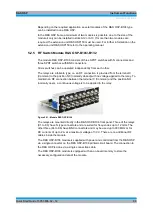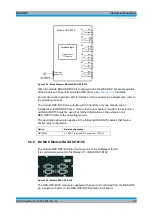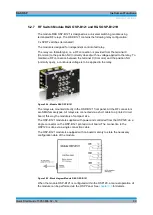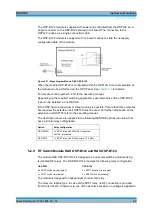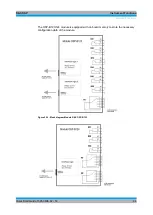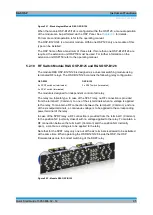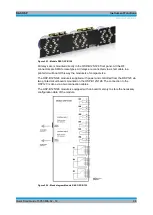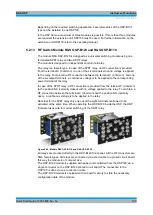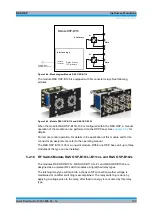
R&S OSP
Instrument Functions
Module Functions
Quick Start Guide 1505.3896.62 - 14
88
Depending on the required application, several modules of the R&S OSP-B104 type
can be installed in one R&S OSP.
In the R&S OSP frame a maximum of two modules is possible, due to the size of the
module it only can be installed in slots A12 or A13. If more than two modules are
required, the extension unit R&S OSP150 must be used. For further information on the
extension unit R&S OSP150 refer to the operating manual.
5.2.5 RF Switch Module R&S OSP-B106/-B132
The module R&S OSP-B106 consists of three SPDT switches with N connectors and
three SPDT switches with BNC connectors.
All six switches can be operated independently from each other.
The relays are a failsafe type; i.e. an RF connection is provided from the terminal C
(Common) to the position NC (normally closed) with no voltage applied to the relay. To
maintain an RF connection between the terminal C (Common) and the position NO
(normally open), a continuous voltage is to be applied to the relay.
Figure 5-21: Module R&S OSP-B106
The relays are mounted directly in the R&S OSP-B106 front panel. Three of the relays
(K1 to K3) have N type connectors and are suited for frequencies up to 12 GHz. The
other three (K4 to K6) have BNC connectors and may be used up to 900 MHz or for
DC currents of up to 2 A at a maximum voltage of 30 V. There are no additional RF
cables inside the module.
The R&S OSP-B106 module is supplied with power and controlled from the R&S OSP
via a single connector on the R&S OSP-B106 printed circuit board. The connection to
the R&S OSP is done via a single connection cable.
The R&S OSP-B106 module is equipped with an on-board memory to store the
necessary configuration data of the module.
Summary of Contents for OSP-B011
Page 132: ......

